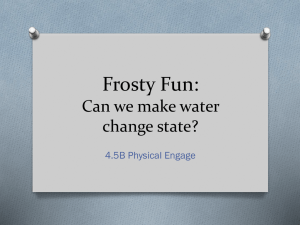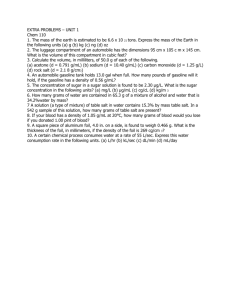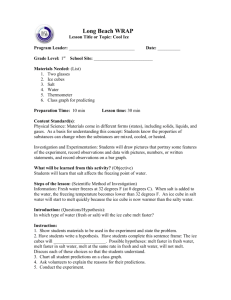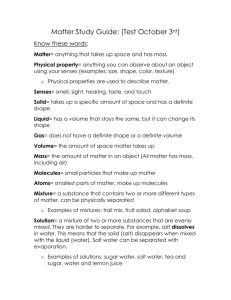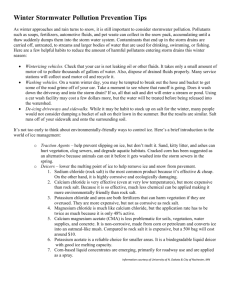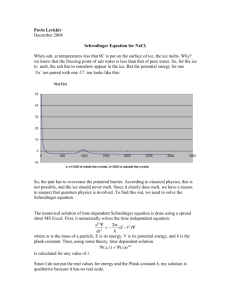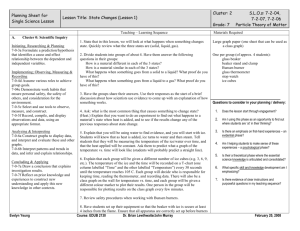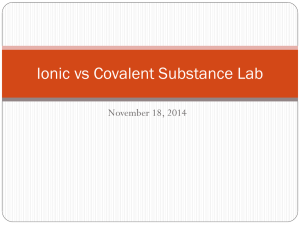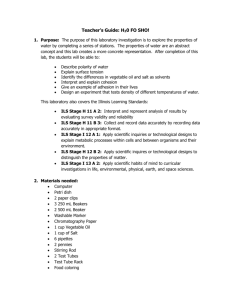Physical and Chemical Changes 1 - Ms. Peavy
advertisement
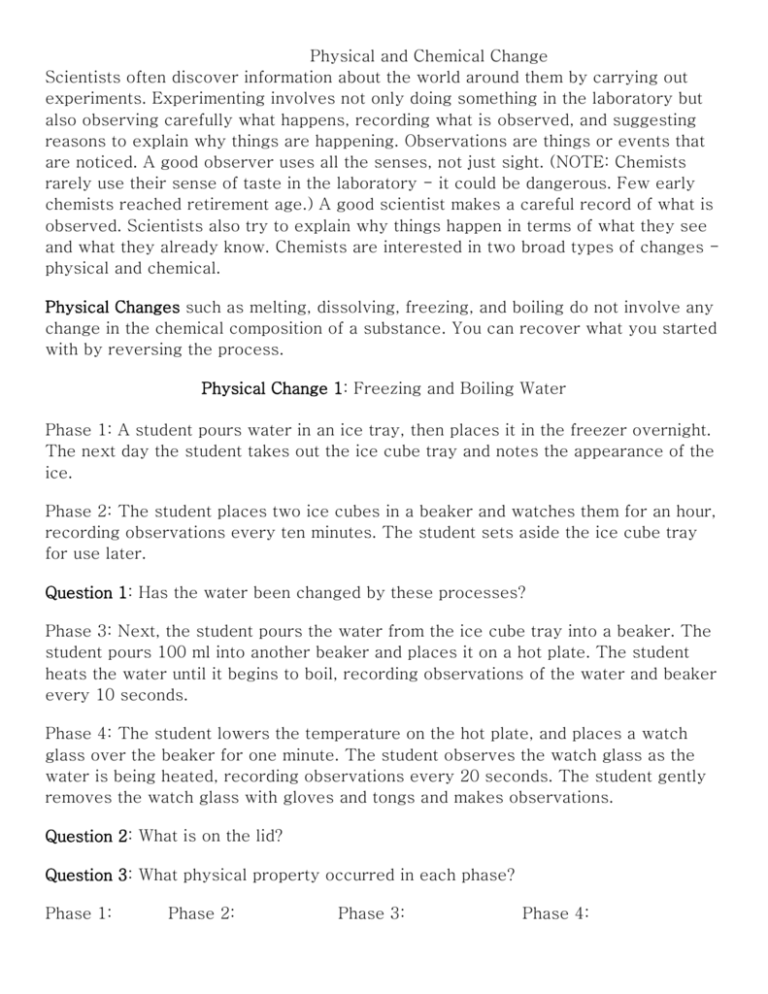
Physical and Chemical Change Scientists often discover information about the world around them by carrying out experiments. Experimenting involves not only doing something in the laboratory but also observing carefully what happens, recording what is observed, and suggesting reasons to explain why things are happening. Observations are things or events that are noticed. A good observer uses all the senses, not just sight. (NOTE: Chemists rarely use their sense of taste in the laboratory - it could be dangerous. Few early chemists reached retirement age.) A good scientist makes a careful record of what is observed. Scientists also try to explain why things happen in terms of what they see and what they already know. Chemists are interested in two broad types of changes physical and chemical. Physical Changes such as melting, dissolving, freezing, and boiling do not involve any change in the chemical composition of a substance. You can recover what you started with by reversing the process. Physical Change 1: Freezing and Boiling Water Phase 1: A student pours water in an ice tray, then places it in the freezer overnight. The next day the student takes out the ice cube tray and notes the appearance of the ice. Phase 2: The student places two ice cubes in a beaker and watches them for an hour, recording observations every ten minutes. The student sets aside the ice cube tray for use later. Question 1: Has the water been changed by these processes? Phase 3: Next, the student pours the water from the ice cube tray into a beaker. The student pours 100 ml into another beaker and places it on a hot plate. The student heats the water until it begins to boil, recording observations of the water and beaker every 10 seconds. Phase 4: The student lowers the temperature on the hot plate, and places a watch glass over the beaker for one minute. The student observes the watch glass as the water is being heated, recording observations every 20 seconds. The student gently removes the watch glass with gloves and tongs and makes observations. Question 2: What is on the lid? Question 3: What physical property occurred in each phase? Phase 1: Phase 2: Phase 3: Phase 4: Physical Change 2: Dissolving Salt in Water Phase 1: A student places a teaspoon of salt and the water into a jar and stirs vigorously. Question 4: What physical changed occurred with the salt? Phase 2: The student pours the salt and water into a saucepan and heats the solution gently for 15 minutes, recording observations every 3 minutes. The student turns off the hot plate before all the water is gone. Question 5: What physical changed occurred with the water? Question 6: What physical changed occurred with the salt? Question 7: Was the salt changed by the dissolving process? Chemical Changes involve a change in chemical composition in the substances. You cannot recover the original substances, as something new has been formed. (Ever try to unfry an egg?) Some signs (or evidence) of chemical change are: a gas is produced the temperature changes a substance “disappears” a solid is formed a color change occurs a new odor is produced Question 8: If you did Experiment #2 with sugar would the same things happen? Question 9: If you kept on heating sugar what do you think would happen? Question 10: Would sugar still be the same chemically after continued heating? Physical Change Solutions 1. 2. 3. 4. 5. 6. 7. 8. No. Even though it is ice, it is still water. There are water droplets on the surface of the watch glass. P1 Freezing P2 melting P3 boiling/evaporation P4 condensation. The salt dissolved. Evaporation None. The salt remains in the pan. No. 9. 10. Yes and No. The sugar would dissolve. The water would evaporate. But, the sugar would be changed [caramelized] by the heat. It is now carbon, not sugar.
